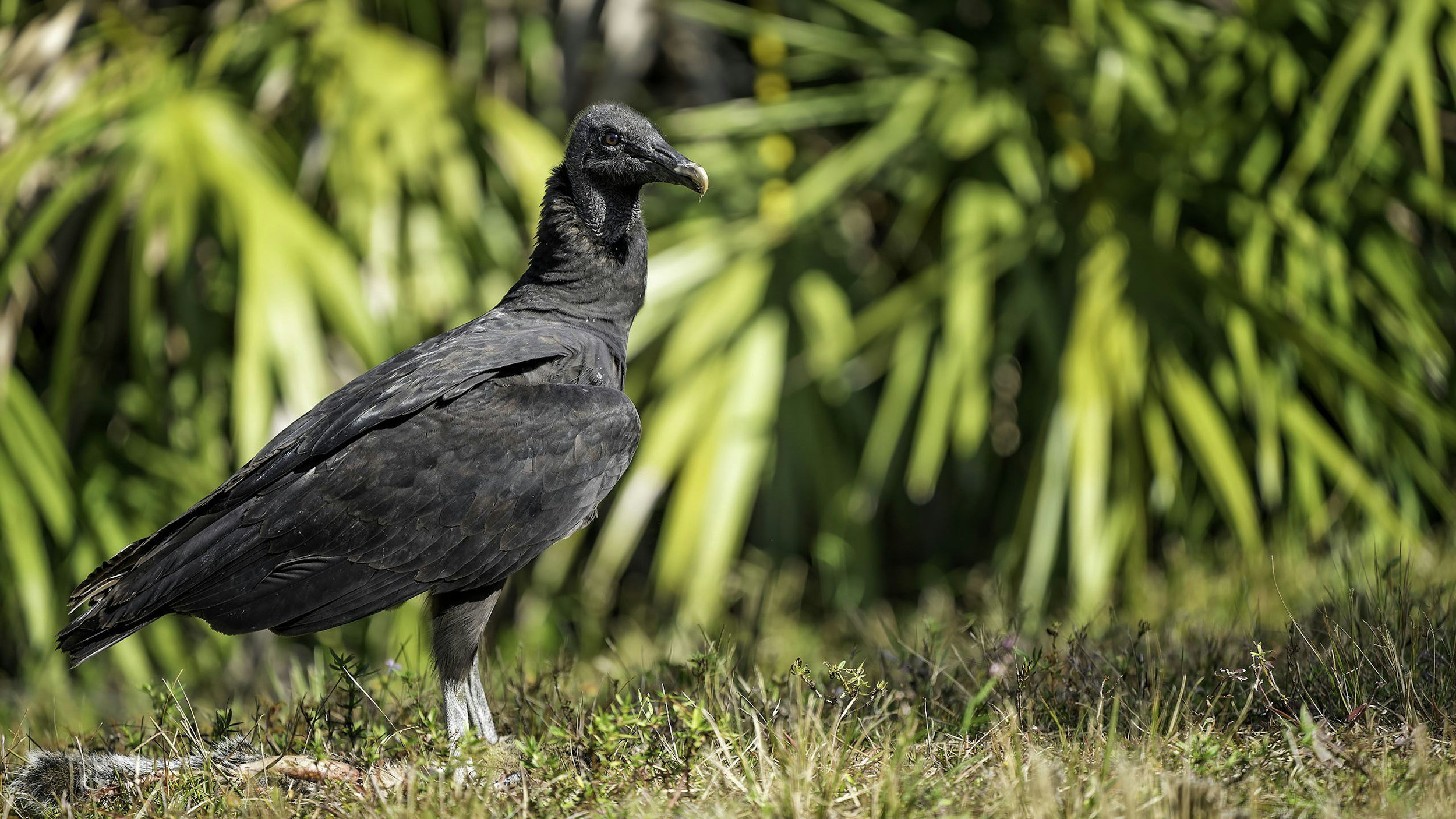
Black Vulture
Black Vulture
Coragyps atratus
These vultures are known for their keen sense of sight and are often seen soaring high in the sky in search of food. Unlike turkey vultures, black vultures rely more on sight than smell to locate carcasses. They are opportunistic feeders and play an important role in the ecosystem by cleaning up dead animals.
CONSERVATION STATUS: LEAST CONCERN
Range
Black vultures are found primarily in the Americas, from the southern United States to South America.
Fast Facts
-
Description
The black vulture has a robust body, with predominantly black plumage, and a distinctive, bare, dark gray head. Its wings are broad and long, often appearing slightly shorter than those of its close relative, the turkey vulture
-
Diet
Black vultures are primarily scavengers, feeding on the carcasses of dead animals.
-
Size
Black vultures are medium-sized birds with a wingspan of about 5-5.5 feet and a body length of around 2-2.5 feet, weighing between 3-5 pounds.
-
Lifespan
Wild: 10-20 years
Human care: 30 years
Black vultures are known to be quite social and often roost together in large groups, sometimes numbering in the hundreds. They are also capable of working together when feeding, using teamwork to chase away other scavengers from a carcass.
Fun Fact
Our Wildlife Ambassadors
Igor
Igor was stolen from the wild as a chick. The people who took him from the wild sttampted to raise him until they relized that vultures do not make good pets. They tried to release Igor back into the wild, but he became a nuisance and kept approaching people and begging for food; he even stole a few picnics in a local park! Wildlife officers were able to obtain Igor and took him to the Auburn University Wildlife hospital, where it was quickly determined that he was imprinted on humans. Afterwards, he became a permenant resident of Raptor Hallow Sanctuary. Igor is full of personality and is always a crowd favorite on education programs and in our free flight shows, endlessly making people laugh.
Igor has been at the sanctuary since 2018



